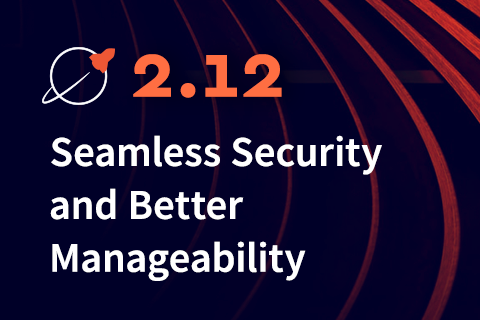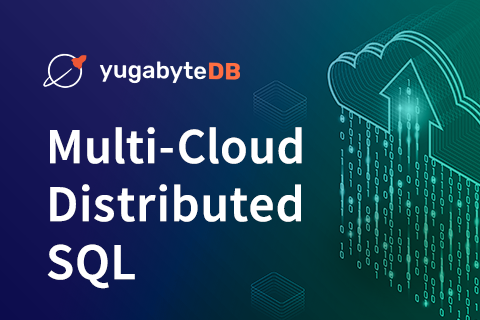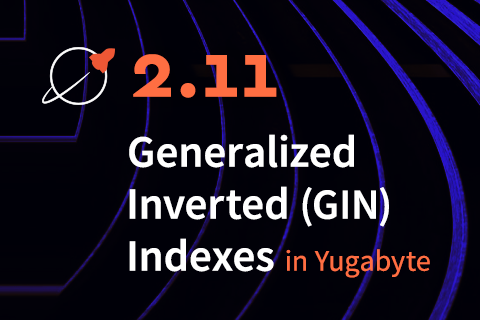Announcing YugabyteDB 2.6
Yugabyte is on a mission to build the default database for cloud native applications and simplify operational data infrastructure. Our latest release, YugabyteDB 2.6, is a big step forward towards that goal. YugabyteDB 2.6 includes significant enhancements to the open source database and our self-managed DBaaS offering, Yugabyte Platform. These enhancements, including point in time recovery (PITR), default encryption in transit, availability of Yugabyte Platform on Microsoft Azure, Red Hat OpenShift, and VMware Tanzu, and Yugabyte Platform high availability, amplify the core database features and enable our enterprise customers to use YugabyteDB in their production cloud environments.
In the following sections, we go over the new capabilities in YugabyteDB 2.6.
Core Database
Point in Time Recovery (PITR)
PITR allows a database to be restored to a specific point in time in the past, offering protection against data corruption, app or operator errors, and other unintended database changes or losses. PITR builds on the lightweight snapshot feature available in YugabyteDB. Let us look at how this works.
Admins can take regular in-cluster snapshots of the database at a configurable frequency and specified retention period. They can then flashback in time on a restored snapshot, effectively ignoring newer data in the snapshot. Suppose you want to restore a database to a particular time, say 6:50 pm on Tuesday. To do this, you would use the 7 pm snapshot and flashback in time to the 6:50 pm view of the world by ignoring the last 10 minutes of changes. It is important to note that PITR does not rely on a rollback + replay mechanism.
PITR is now GA for YCQL, and in early preview for YSQL. PITR enables granular data protection with a low recovery point objective (RPO), recovery time objective (RTO), and has minimal impact on the cluster.
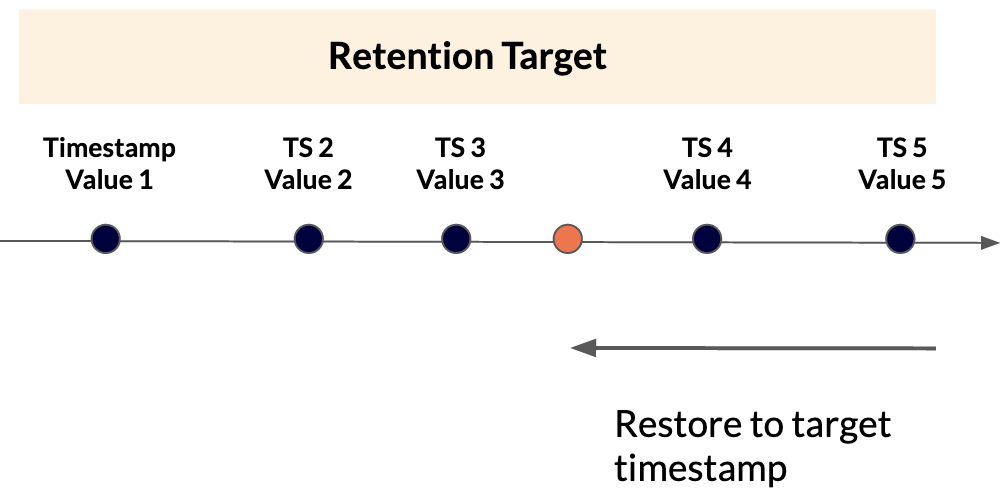
TLS Encryption Enabled by Default
YugabyteDB 2.6 now has encryption in transit (TLS) enabled by default for both client-to-node and node-to-node traffic. TLS enhancements allow you to create new self-signed certificates, use existing self-signed certificates, or upload third-party certificates from external providers, such as Venafi or DigiCert. As we discussed in our earlier blog introducing YugabyteDB 2.7, we tested the performance impact of turning on TLS/SSL by running TPC-C benchmarks. We found that enabling TLS does not have a large impact on the overall performance:
- Throughput largely remains the same
- Nominal increase in average latency (~15%, with a 10% variance between runs in the cloud)
- Slight increase in CPU utilization (roughly 6%, again within the margin of error in the cloud)
With TLS turned on, you get confidence that your communication is secure while maintaining lightning fast responses between nodes and applications. Yugabyte Platform lets you protect data in transit using (1) server-to-server encryption for intra-node communication between YB-Master and YB-TServer nodes, and (2) client-to-server encryption for communication between clients and nodes when using CLIs, tools, and APIs for YSQL and YCQL. You can learn more about encryption in transit in YugabyteDB here.
Yugabyte Platform
Extended Support for Major Public and Private Cloud Services in Yugabyte Platform
Yugabyte Platform now supports running a self-managed DBaaS on all major public clouds and Kubernetes services. You can use Yugabyte Platform on the cloud of your choice, including all public cloud platforms (AWS, GCP, and Azure), private cloud environments (on premises), and any Kubernetes distribution.
Microsoft Azure
Yugabyte Platform natively integrates with Microsoft Azure, allowing admins to efficiently operate a self-managed database-as-a-service on Azure and freeing developers to focus on building applications. Once the admin configures their Azure cloud tenant as a provider in Yugabyte Platform with a few simple steps, Yugabyte Platform takes care of infrastructure orchestration and day 2 database operations, including instance provisioning and configuration, security operations, online software upgrades, scheduled backups, monitoring, and alerting.
Red Hat OpenShift
YugabyteDB brings support for both scale-out RDBMS and internet-scale OLTP workloads on Red Hat OpenShift, enabling customers to transition these workloads to enterprise-grade Kubernetes. The YugabyteDB Operator allows developers to run YugabyteDB clusters on OpenShift using the same cloud native practices they have come to use with stateless applications, such as scaling and managing the lifecycle of workloads using CI/CD pipelines. You can find the YugabyteDB Operator in the OperatorHub of your OpenShift environment.
The YugabyteDB Operator can be installed in your OpenShift environment and provide Kubernetes native management capabilities. It defines new Custom Resource Definitions (CRD’s), handles lifecycle events (such as scaling), and manages YugabyteDB running in pods.
Yugabyte Platform is certified on Red Hat OpenShift and available on the Red Hat Marketplace, enabling enterprise customers to discover, try, purchase, deploy, and manage certified container-based software across environments — public and private, cloud and on-premises.
VMware Tanzu
VMware and Yugabyte have partnered to bring the power of YugabyteDB to VMware Tanzu. As the first distributed SQL database on Tanzu Marketplace, YugabyteDB provides application developers an easy and cloud native way of scaling the relational SQL workloads for microservices applications without having to face the complexities of traditional scaling techniques across any cloud without lock-in. You can find YugabyteDB in VMware Tanzu Solutions Hub here.
Support for VMware Tanzu has been added as one of the cloud provider configurations in Yugabyte Platform, a management platform for building your private DBaaS. VMware Tanzu allows you to build, run, and manage Kubernetes-based containerized applications. Yugabyte Platform has been officially certified and made available in the VMware Marketplace. This configuration works with Tanzu Kubernetes Grid (TKG) and Tanzu Kubernetes Grid Integrated Edition.
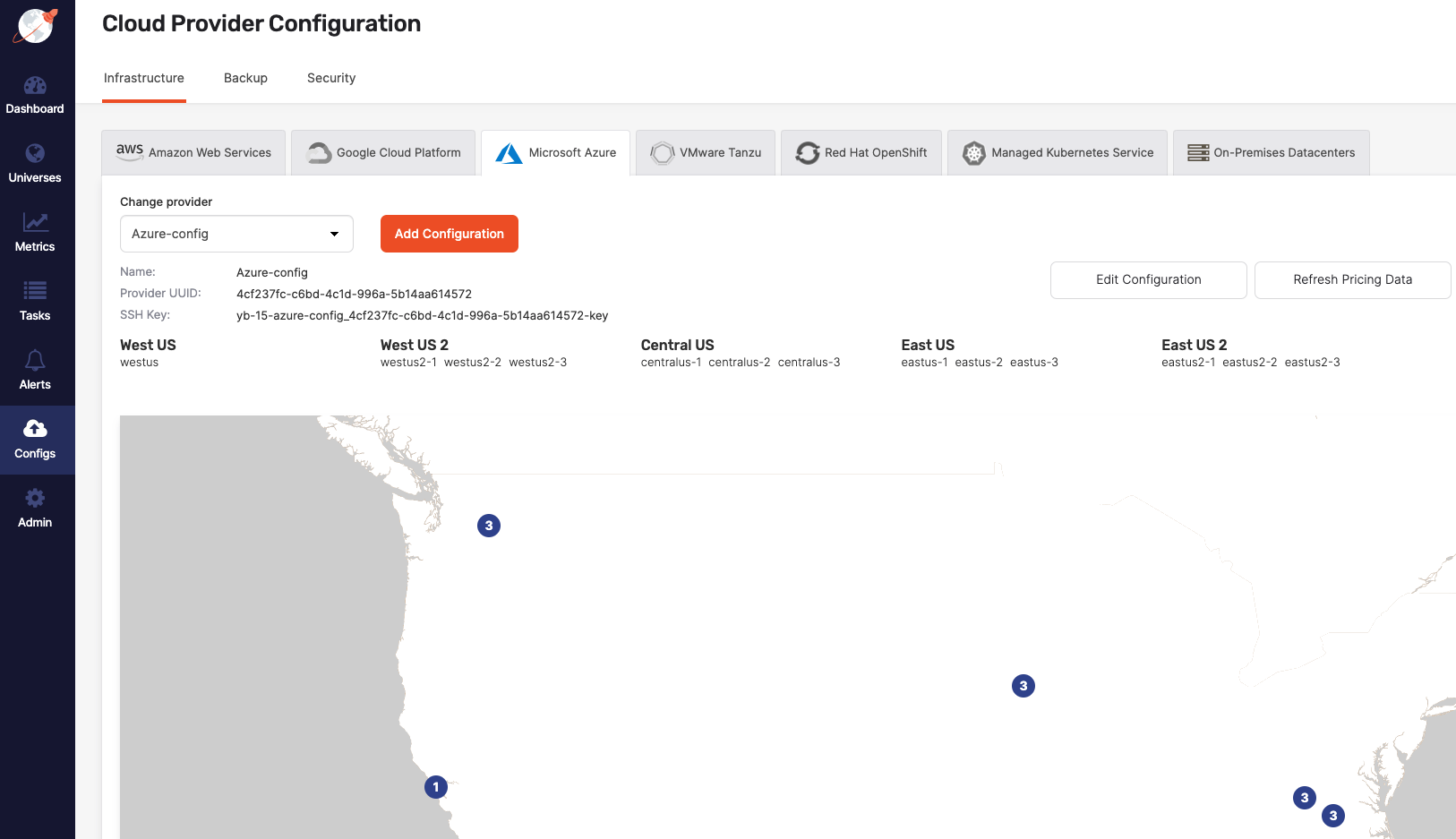
Fig: Expanded support for IaaS services in GA
Yugabyte Platform High Availability (HA)
Yugabyte Platform enables our enterprise customers to deliver a private DBaaS through streamlined operations and consolidated monitoring. Recognizing the critical role that Yugabyte Platform plays in simplifying infrastructure and database operations, YugabyteDB now offers a high availability mode for the Yugabyte Platform console, ensuring that the console is available in the event of zone or region failures. Using the Yugabyte Platform installer, enterprise customers can effortlessly deploy the Yugabyte Platform console in HA mode. HA mode of Yugabyte Platform, first announced in YugabyteDB 2.7, is now generally available.
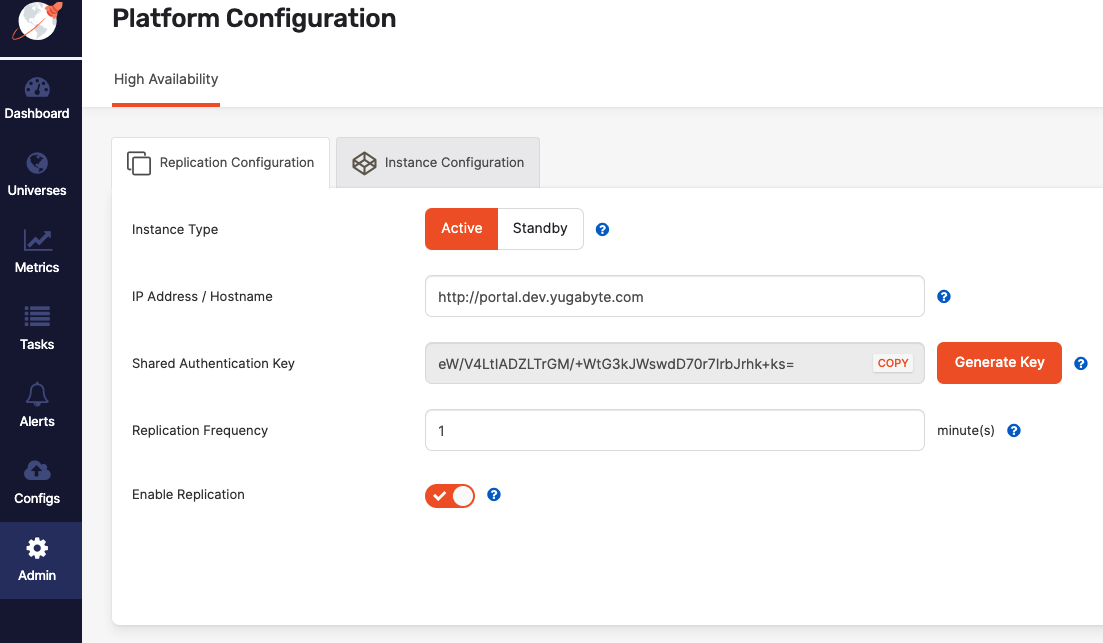
Fig: High Availability configuration for Yugabyte Platform instances
In 2.6, we added primary/multiple-secondaries high availability for Yugabyte Platform instances. Users can set up the HA configuration at the time of installation itself, and manage and monitor the status through the UI at runtime. Currently, the switchover is manual, but in subsequent releases, automatic failover will be supported. The primary Yugabyte Platform instance manages YugabyteDB databases. There can be only one primary at a time. This instance communicates with secondaries for data replication based on a replication frequency that is configurable. The secondary Yugabyte Platform instance does not support running database operations but participates in data replication. Users can have multiple secondaries.
Additional Enterprise Features
- The platform now supports creating multi-instance cloud providers. Admins can add more than one configuration for the same provider, e.g., AWS.
- Added support for AWS GP3 volumes during universe creation from Yugabyte Platform. The disk size and IOPS configuration for GP3 drives are configurable, whereas throughput is not configurable and is set to the default value of 125MiB/sec.
- Improved search usability for live and slow queries by adding autocomplete suggestions, better filtering, and navigation.
What’s Coming – Roadmap Teaser
At Yugabyte, we strive to be fully transparent with our customers and user community, and to that end we publish our roadmap on GitHub. Here are some notable features you can expect in upcoming releases. Note that the current roadmap is subject to change as we finalize our planning for the next releases.
Core database features
Several core database features are on the roadmap, such as point in time recovery and incremental backups, better support for pessimistic locking, and better support for online schema migrations including support for popular migration frameworks such as Liquibase, Flyway, and other ORM migration frameworks. Additionally, continued work to unlock even greater database performance is always a work in progress.
- Support for Internationalization and Collation in YSQL – Support COLLATE option for text-based columns. In particular support for primary key and indexed columns requires specific DocDB handling to ensure correct equality and sorting semantics.
- Support for GIN indexes
- LDAP Integration for YCQL
- YSQL JDBC Smart Driver that is cluster and topology aware and can automatically route queries to the appropriate node(s), perform load balancing, and discover newly added or removed nodes
- Enhanced support for online schema migrations including support for popular migration frameworks such as Liquibase, Flyway, and other ORM migration frameworks
Platform features
- xCluster replication management UI – An easy and user-friendly interface for xCluster replication setup, ensure setup correctness, as well as monitoring and tracking xCluster replication through Yugabyte Platform console rather than using CLI commands
- New Alerting and Notifications UI to raise real-time alerts based on a user alert policy. It also provides OOTB intelligent database health checks and default alerts. Users can choose to forward notifications to 3rd party centralized notification systems or build their alerting stack programmatically via APIs.
- Yugabyte Platform API SDK to enable automation of any day 2 operations of the database using your favorite CI/CD tools
Get Started
We’re very happy to be able to release all of these enterprise-grade features in the newest version of our flagship product – YugabyteDB 2.6. We invite you to learn more and try it out:
- Install YugabyteDB 2.6 in just a few minutes
- Join us in Slack for interactions with broader YugabyteDB community and real-time discussions with our engineering teams
